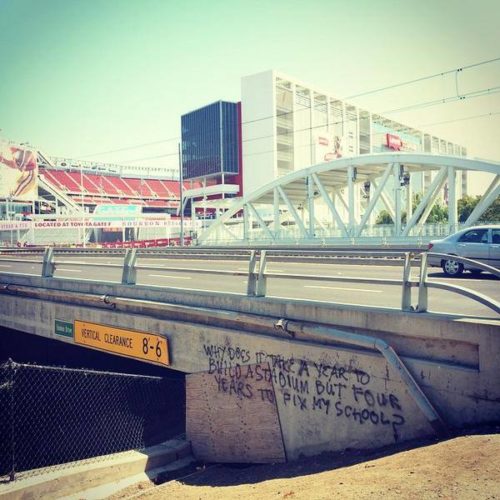Levi’s Stadium in Santa Clara, California was the stage for the 50th NFL Super Bowl less than a week ago. Besides issues with the turf and footing, all accounts have been very well for the new stomping ground for the 49ers, nestled 40 minutes south of San Francisco.
Anytime a stadium is constructed there is always debate, whether its a large scale construction for a professional team or a highschool. Why? Because of money. Stadiums built for professional sports teams are funded in one of two ways, private and public, one coming from the wallet of the owner and alike, and one coming from the tax payers and citizens of the city.
Many are critical of the latter, helping build a stadium that they will in turn have to pay to even enter once it’s completed.
One of those critics took to the wall outside of the stadium after it was finished, writing “Why does it take a year to build a stadium but four years to fix my schools.”
While yes, a large stadium, especially when it will be hosting the Super Bowl shortly after its completion will generate far more money than a school directly will, one could argue that long term, placing more importance on schools would theoretically in effect lead to better education, and therefore higher paying job, with a share of that money returning back into the economy, all multiplied by the number of students who were able to advance their education by a new school in the first place.
Levi’s Stadium ended up costing $1.3 billion dollars. Though a model deal was agreed upon that costs the taxpayers less than an average NFL stadium would, they still had to end up shelling out $200 million.











